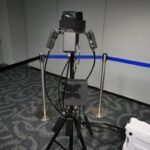
IATA Survey Shows Passengers Will Use Biometrics if it Improves Airport Processes Most airline travelers globally are willing to use biometrics to identify themselves if it means faster processing times through airport, the International Air Transport Association (IATA) says based on the results of its 2021 Global Passenger Survey. The other main finding from the survey is that passengers want to spend less time in lines. “Passengers have spoken and want technology to work harder, so they spend less time…

 By
By 











